Platform-sharing to amortise vehicle development and production costs is common in the automotive industry, from the Toyota 86/Subaru BRZ, Mazda MX-5/Fiat 124 Spider and Toyota Supra/BMW Z4 sports car pairings to light-commercial vehicle tie-ups like the Ford Ranger/Mazda BT-50, Renault Trafic/Mitsubishi Express and more recently Isuzu D-Max/Mazda BT-50.
Following the end of its long platform-sharing agreement with Mazda, Ford teamed up with Volkswagen to provide the underpinnings for the second (and current) generation Ranger and Amarok.
Volkswagen designers and engineers worked closely with their Ford counterparts throughout the design and development process to ensure the latest Amarok embodied enough Volkswagen ‘DNA’ to provide clear distinction between the two brands.
So, wearing our editorial hard-hat and hi-vis, we recently sampled the work-focused base model in the Amarok range to see how it measures up from a tradie’s perspective.
Volkswagen Amarok 2024: Core Tdi405 4Motion
| Engine Type | Diesel Turbo 4, 2.0L |
|---|---|
| Fuel Type | Diesel |
| Fuel Efficiency | 8.0L/100km (combined) |
| Seating | 5 |
| Price From | $49,390 - $56,760 |
| Safety Rating |
|
Price and Features – Does it represent good value for the price? What features does it come with?
Our Amarok Core test vehicle is available only with a TDI405 2.0-litre four-cylinder turbo-diesel and six-speed automatic for a list price of $55,490. That's about 9.0 per cent more than major player rivals like the closely-related Ford Ranger XL ($50,880) and Toyota HiLux Workmate ($50,420).
It may be the workhorse of the Amarok range, with fabric seating, wipe-clean vinyl flooring and rear drum brakes, but it looks a step above with its body colour-coded front bumper and chunky 17-inch ‘Combra’ alloy wheels with 255/70R17 tyres and a full-size steel spare.
.jpg)
Also standard are LED headlights and DRLs, side-steps, underbody drivetrain/fuel tank protection, front recovery hooks, 3.5-tonne tow-bar with 12-pin plug, locking rear differential, tyre pressure monitoring, rain-sensing wipers and more.
There’s also an 8.0-inch digital driver’s display and 10-inch touchscreen for the four-speaker multimedia system which includes wireless phone-charging, wireless Apple/Android connectivity, DAB digital radio, USB A and C ports and two 12-volt outlets.
Design – is there anything interesting about its design?
Although it shares underpinnings, drivetrains and technology with the Ranger, Volkswagen has done a commendable job in differentiating the Amarok in both design and dynamics (see Driving).
Its unique styling features a broad and imposing grille and headlights reminiscent of the original model which accentuates the vehicle’s width, resulting in a broad-shouldered look.
The interior design is also pleasing, even at this entry level, with European influence evident in the look and feel of various controls, including a left-hand indicator stalk and piano key-style buttons on the centre console.
.jpg)
There are big assist handles on the A and B pillars and the driver and front passenger seating is firmly bolstered and supportive. The rear bench seat is also comfortable and spacious with good kneeroom, given I’m 186cm and can sit behind the driver’s seat in my position with sufficient clearance. This has cured the cramped rear legroom that plagued the original Amarok.
There’s also ample rear headroom, even for tall people sitting in the slightly higher centre seat. However, shoulder room is tight for three adults (typical in utes this size) so for long trips two would be ideal.
Our only criticisms are the absence of air-vents in the centre console for rear seat passengers and no physical dials on the dash for altering cabin temperature and fan speed. These climate adjustments must be made using the touchscreen, which can be distracting when driving.
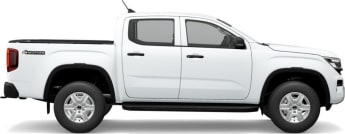
Practicality – How practical is its space and tech inside?
With its 2269kg kerb weight and 3250kg GVM, the Amarok Core has a 981kg payload rating, which makes it eligible for a novated lease as it's below the 1000kg threshold that applies to those lease agreements.
Up to 85kg of that payload can be carried on the roof when driving, which increases to 350kg when the vehicle is stationary, making it suitable for roof-top tents, viewing platforms etc.
It’s also rated to tow up to the class-benchmark 3500kg of braked trailer, but with its 6200kg GCM (or how much it can legally carry and tow at the same time) that would require a substantial 550kg reduction in vehicle payload (from 981kg to 431kg) to avoid exceeding the GCM.
A practical alternative would be to reduce the braked towing limit by the same amount (from 3500kg to 2950kg) and keep the maximum payload. That still allows for a sizeable towing capacity for most work and recreational tasks, given few (if any) owners need to tow 3500kg.
The load tub’s floor is 1544mm long and 529mm deep, with 1224mm between the wheel-housings ensuring the latest Amarok continues its predecessor’s ability to carry standard Aussie or Euro pallets.
It comes with no protective internal liner (genuine accessory is available) and the tailgate has no lower/lift assistance. However, the load tub does have bright internal lighting and sturdy-looking protective capping along the top edges, including a 130cm ruler on the tailgate. There are also six internal load-anchorage points, plus external rope rails along each side.
Cabin storage for driver and front passenger includes a bottle-holder and bin in each door, an open tray embedded in the centre dash-pad, upper and lower gloveboxes and an overhead glasses holder. The centre console has two small-bottle/cup-holders next to the gearshift, plus a lidded box at the back which doubles as a driver’s elbow rest.
Rear seat passengers get a small-bottle/cup-holder in each door, plus a fold-down centre armrest containing two more small-bottle/cup-holders. The seat’s base cushion can also swing up and be stored in a vertical position if more internal cargo space is required, or to access two underfloor storage compartments.
Under the bonnet – what are the key stats for its engine and transmission?
The TDI405 is a 2.0-litre four-cylinder turbo-diesel producing 125kW of power at 3500rpm and 405Nm of torque between 1750-2500rpm.
This is paired with a six-speed torque converter automatic that offers the choice of manual sequential-shifting, which can be handy in off-road driving situations and when heavy towing, particularly in hilly terrain. There’s also four different drive modes comprising Normal, Eco, Slippery and Towing/Heavy Load.
The part-time, dual-range 4Motion 4x4 system offers three selectable drive modes comprising 2H (4x2 high range), 4H (4x4 high range) and 4L (4x4 low range). It also has a locking rear differential.
.jpg)
Efficiency – what is its fuel consumption? What is its driving range?
Volkswagen claims an official combined average of 8.0L/100km and the dash display was only slightly higher at 8.7 when we stopped to refuel after our 345km test, of which about one third was carrying its maximum payload. This compares with our own figure calculated from fuel bowser and tripmeter readings of 10.0L/100km, resulting in a ‘real world’ driving range of around 800km from its big 80-litre tank.
.jpg)
Driving - what’s it like to drive?
The driver’s seat is supportive, with prominent side-bolsters on the base cushion and backrest holding you firmly in place and providing (dare we say) a ‘sporty’ feel for the driving position.
Although it shares the same suspension architecture as the Ranger, it has been tuned to provide a distinctive Volkswagen character with sure-footed solidity.
The steering feel is firm, responsive and nicely weighted, combined with a disciplined unladen ride quality with enough suppleness to absorb bumps with ease.
.jpg)
Noise insulation is also commendable for a base-grade model, with negligible engine, tyre and wind noise on the highway. It provides low-stress cruising at these speeds, thanks to adaptive cruise control and long-legged gearing which ensures the turbo-diesel only requires 2000rpm to maintain 110km/h.
To test its GVM rating we inflated the tyres to their recommended pressures (38psi front, 44psi rear) and forklifted 890kg into the load tub, which with driver equalled the 981kg payload limit.
The rear leaf springs compressed 70mm under this weight, but there was no chance of bottoming-out because of long cone-shaped jounce rubbers that engage with the springs early in their compression.
.jpg)
This design eliminates the hard thumps at full travel like traditional bump-stops and provide what is effectively a second stage of load support. The result is a smooth ride under maximum loads, regardless of road conditions.
We stuck with the 'Normal' drive mode, to assess its performance without resorting to the 'Towing/Heavy Load' setting and found it more than capable of doing the job.
Acceleration from standing starts was brisk given the load it was carrying, making light work of city and suburban driving. It was just as competent on the highway and when tackling our 13 per cent gradient, 2.0km set climb at 60km/h, self-shifting down to third gear and 2000rpm to easily haul this load to the summit.
Warranty & Safety Rating
Safety – What safety equipment is fitted? What is its safety rating?
The Amarok boasts a five-star ANCAP rating from assessment in 2022 and features nine airbags, including side-curtain protection for rear seat passengers that was missing in the original. There’s also AEB with pedestrian and cyclist monitoring, lane-keeping, trailer-sway control, adaptive load control, reversing camera and more, but our base model misses out on front/360-degree cameras plus blind-spot monitoring and rear cross-traffic alert. There’s also ISOFIX child-seat mounts and top-tether anchorages on the two outer rear seat positions.
.jpg)
Ownership – What warranty is offered? What are its service intervals? What are its running costs?
Volkswagen covers the Amarok with a five year/unlimited km warranty plus 12 months complimentary roadside assist, which is par for the mainstream market course.
Scheduled servicing is 12 months/15,000km whichever occurs first. Capped-price five-year servicing plan costs $1900, or an average of $380 per year.
Verdict
Minimal bling is standard issue in workhorse utes, but the Amarok Core has a more upmarket look and feel than we typically expect in these base-grade models. With its alloy wheels, sharp styling and refined handling, it’s a competent worker with a touch of European panache – and pricing to match.
Pricing Guides







.jpg)
.jpg)
.jpg)
.jpg)
.jpg)
.jpg)
.jpg)
.jpg)
.jpg)
.jpg)
.jpg)
.jpg)
.jpg)
.jpg)
.jpg)
.jpg)






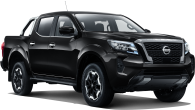




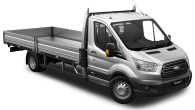


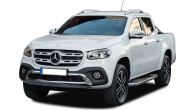



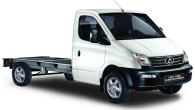




.jpg)
.jpg)



.jpg)